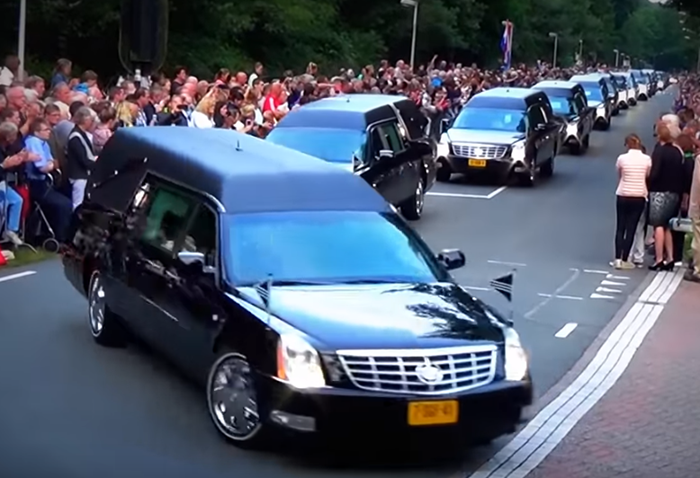Motorised funeral procession


A funeral procession is recognisable by the flags attached to the front left and right of the cars. These flags may only be used to carry the deceased from the death site to the burial site or to their final resting place. After the ceremony, the flags on the private cars are returned to the funeral director and the flags on the hearse are covered. From then on, they are again subject to normal traffic rules.
All cars recognisable as part of the funeral procession are subject to special traffic regulations. With the exception of the car driving in front. The latter must follow the normally applicable rules of priority.
What to do when a funeral procession approaches?
- Once the first car has passed, all following cars have the right of way at an equivalent intersection. It does not matter whether they are coming from the left or right, driving straight ahead or turning.
- Pedestrians, cyclists and drivers of disabled vehicles wishing to cross a pedestrian crossing must also give way to the funeral procession.
- A bus wishing to depart from a bus stop must give way to an approaching funeral procession.
- These rules apply only at equivalent intersections. On roundabouts, intersections with traffic lights, priority intersections with give way markings, entry lanes and exits, these rules do not apply.
- If a funeral procession encounters traffic lights en route, unlike a military column, every participant in the procession must stop at a red traffic light.
- If a funeral procession breaks up due to a red traffic light or when approaching a priority road, the first car of the following procession is considered the leader of the new funeral procession. Then the rules as described above apply again.
Article 1 of the RVV.
Motor vehicle funeral procession: a procession, consisting of motor vehicles, accompanying a corpse as referred to in Article 2, first paragraph, part a, of the Burial Act or the ashes of a cremated corpse and bearing the identification signs referred to in Article 30c.
